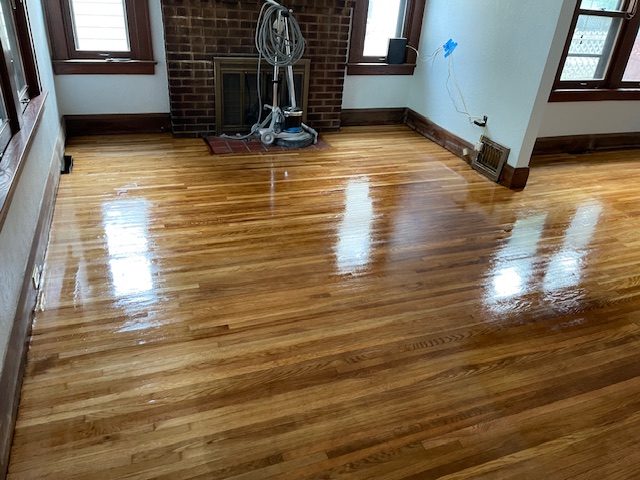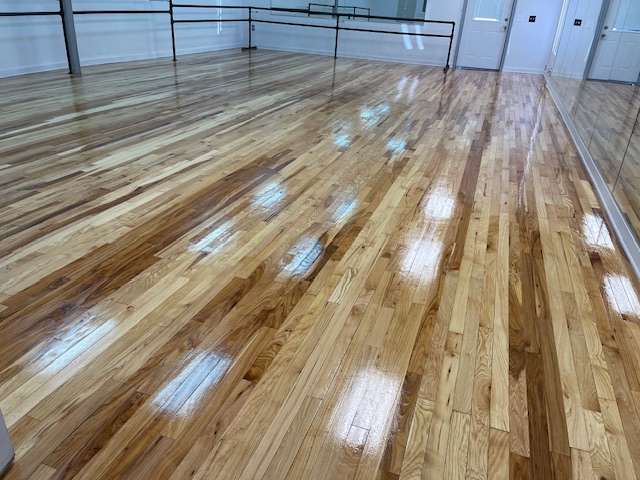Toxicity In Wood Floor Finish

Is Hardwood Floor Finish Toxic?
Hardwood floors add beauty, warmth, and value to any home. However, when it comes to choosing the right hardwood floor finish, safety is a crucial consideration. Many homeowners are concerned about whether hardwood floor finishes are toxic, especially when it comes to indoor air quality and the health of their family members. In this article, we’ll explore the different types of hardwood floor finishes, the potential risks associated with certain finishes, and how to choose safer alternatives for your home.
Understanding Hardwood Floor Finishes
Hardwood floor finishes come in a variety of formulations, each offering different levels of durability, appearance, and chemical composition. Generally, there are three main types of finishes: oil-based, water-based, and natural finishes. Each of these has a distinct chemical profile that can impact both the safety of your home environment and the health of those living in it.
Oil-Based Finishes
Oil-based finishes are a common choice for hardwood floors because they offer a rich, amber-toned appearance and a durable, long-lasting finish. These finishes typically contain volatile organic compounds (VOCs), which are chemicals that can be released into the air as the finish cures. VOCs are known to contribute to indoor air pollution and can cause health issues such as headaches, dizziness, and respiratory irritation.
While oil-based finishes tend to be more durable and resistant to wear, the high VOC content can pose a significant health risk, especially in poorly ventilated areas. It’s important to avoid prolonged exposure to these fumes during the curing process. Most oil-based finishes take several days to cure fully, and during that time, the VOCs can linger in the air, potentially affecting indoor air quality.
Water-Based Finishes
Water-based finishes have become increasingly popular due to their lower levels of toxicity and faster drying times compared to oil-based finishes. They contain fewer VOCs, making them a safer option for homeowners concerned about exposure to harmful chemicals. Water-based finishes are also more environmentally friendly because they emit fewer pollutants into the air.
However, not all water-based finishes are completely non-toxic. Some can still contain small amounts of chemicals that may be irritating, particularly if the area isn’t adequately ventilated. Always check the label and opt for finishes that are labeled as low-VOC or zero-VOC to ensure the best safety for you and your family.
Natural Finishes
For those looking for the safest and most eco-friendly option, natural finishes such as hardwax oil or plant-based oils are a great choice. These finishes are made from natural materials like linseed oil, beeswax, or tung oil, and they do not contain harmful chemicals or synthetic compounds. Because these finishes are derived from nature, they typically don’t emit toxic fumes, making them a safer option for those with sensitivities or small children.
Natural finishes provide a subtle, matte finish that enhances the wood’s natural beauty. While they may not offer the same level of protection and durability as synthetic finishes, they’re a non-toxic, environmentally friendly alternative that is ideal for those looking to avoid chemicals in their home.
Dust from Certain Hardwood Species
In addition to the potential toxicity of finishes, homeowners should also be aware of the risks posed by wood dust from certain hardwood species. Some wood species, such as oak, maple, and cherry, produce dust particles that can be harmful when inhaled. This dust can cause respiratory issues, especially when sanding or refinishing hardwood floors.
Wood dust can be an irritant to the eyes, skin, and lungs. In some cases, long-term exposure to wood dust has been linked to more serious conditions such as asthma, nasal cancers, and other respiratory illnesses. To reduce the risk of exposure to hazardous wood dust, always use proper ventilation and wear protective gear, such as a dust mask or respirator, when sanding or refinishing hardwood floors.
Additionally, certain species of wood, like teak, rosewood, and mahogany, are known to produce more toxic dust than others. If you’re working with these hardwoods, it’s essential to take extra precautions to protect your health.
How to Choose a Safe Hardwood Floor Finish
If you’re concerned about the potential toxicity of hardwood floor finishes, here are a few tips for choosing a safer option:
Look for Low-VOC or Zero-VOC Finishes: Many brands offer water-based finishes with low or zero VOCs. These finishes are the safest choice for indoor air quality and overall health.
Choose Natural Finishes: Hardwax oils and plant-based oils are non-toxic and eco-friendly alternatives that don’t release harmful chemicals.
Ensure Proper Ventilation: Whether you’re using oil-based or water-based finishes, always work in a well-ventilated area to minimize exposure to fumes.
Use a Dust Mask or Respirator: If you’re sanding floors or working with wood dust, wearing a protective mask can help prevent inhalation of harmful particles.
Consult with Experts: If you’re uncertain about the type of finish to choose, consider consulting with a hardwood flooring professional to help you select the best, safest product for your home.
Conclusion
Hardwood floor finishes can vary significantly in terms of toxicity. Oil-based finishes, while durable, can release harmful VOCs that may be detrimental to your health. Water-based finishes and natural finishes offer safer alternatives, with water-based options typically emitting fewer harmful chemicals. Additionally, wood dust from certain species can also pose a health risk, so proper precautions should be taken when working with hardwood floors.
At Choice Hardwoods, we understand the importance of both aesthetic appeal and health safety when it comes to hardwood floor finishes. If you have concerns about toxic finishes or are looking for safer alternatives, we are here to help guide you in choosing the best products for your home. Our team is dedicated to providing high-quality, non-toxic hardwood floor refinishing and installation services in the Twin Cities metro area.
By choosing the right finishes and being mindful of potential health hazards, you can enjoy your beautiful hardwood floors while maintaining a safe, healthy living environment for you and your family.

Are Low VOC Finishes Inferior Products?
A common question we receive at Choice Hardwoods is whether low-VOC or zero-VOC hardwood floor finishessacrifice durability or overall quality for the sake of being safer or more environmentally friendly. Many homeowners worry that choosing a low-VOC finish means compromising on the protection of their hardwood floors. However, the truth is that today’s low-VOC finishes are not only safer, but they also offer excellent durability and in some cases, even outperform traditional oil-based finishes.
Understanding Low-VOC Finishes
Low-VOC (Volatile Organic Compound) finishes are designed to release fewer harmful chemicals into the air during and after application. While oil-based finishes have long been favored for their durability, their high VOC content can be harmful to both the environment and indoor air quality. Water-based finishes, on the other hand, typically contain lower levels of VOCs and dry faster, making them a safer choice for homeowners concerned about fumes and pollutants.
Durability and Performance of Water-Based Finishes
One of the most common misconceptions about low-VOC finishes is that they aren’t as durable as oil-based alternatives. However, modern two-part hardening water-based finishes have made significant strides in performance. These finishes use a hardener or catalyst that activates the curing process once mixed, creating a robust finish that provides exceptional wear resistance. In fact, when compared to traditional oil-based finishes, these two-part water-based systems can be more durable and offer superior protection against scratches, stains, and wear from daily foot traffic.
Water-based finishes with two-part hardening options are known for their fast drying times, which means they cure more quickly, making the floor ready for use sooner than oil-based alternatives. This feature can also help reduce the risk of dust or debris settling on the surface during the drying process, which is especially important for high-traffic areas.
Why Low-VOC Finishes Are a Great Choice
Not only are these water-based finishes durable, but they also have additional benefits. They are more environmentally friendly, produce fewer odors during application, and contribute to better indoor air quality, which is especially important in homes with children, pets, or anyone with respiratory sensitivities.
Moreover, the development of advanced polyurethane formulations and other cutting-edge technologies has elevated the performance of low-VOC finishes to the point where they can offer the same level of protection as oil-based options. In fact, many of these water-based finishes are now harder and more resilient than their oil-based counterparts, making them an ideal choice for both residential and commercial hardwood floors.
Conclusion
At Choice Hardwoods, we understand the importance of both safety and durability when it comes to choosing the right hardwood floor finish. Low-VOC finishes, particularly those with two-part hardening systems, offer durability, enhanced protection, and safety, all without compromising on quality. In many cases, these finishes are even more resilient than traditional oil-based finishes, providing long-lasting protection for your hardwood floors while maintaining a healthier indoor environment. If you’re considering a low-VOC finish for your hardwood floors, rest assured that you don’t have to sacrifice durability for safety.

